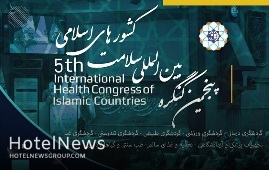
The 5th edition of the International Health Congress of Islamic Countries started in Tehran on Tuesday, aiming to find new opportunities for cooperation and development of health tourism among Muslim nations. Being held at IRIB International Conference Center, the congress is organized by the Health Tourism Development Center of Islamic Countries (HTDC) and supported by ministries, federations, institutions, and organizations in health tourism as well as private and governmental health service providers, the official website of the event announced. The three-day event has brought together seniors and experts from governmental and private sectors in the health tourism industry. The congress is being held in five specialized panel discussions of medical tourism, sports tourism, natural, wellness, and food tourism, medical and laboratory equipment, and nutrition and healthy food. The event started its official operations in 2015 with the aim of playing an effective role in developing economic relations and facilitating the networks between stakeholders in the health and health tourism industry. The developing health tourism industry is one of the most important fields of Iran’s travel sector, which is trying to prove its capabilities and capacities in attracting medical and health tourists to the country. Many domestic experts believe that medical tourism in Iran is a win-win opportunity both for the country and foreign patients, as they are offered affordable yet quality treatment services and the country gains considerable foreign currency. Iran’s two most popular medical tourist cities are Tehran and Mashhad, but the coronavirus outbreak has significantly reduced the number of travelers. Iran is one of the major destinations for health tourism in the region, and patients with 55 different nationalities, mostly from neighboring countries including Iraq, Kuwait, Bahrain, Qatar, Saudi Arabia, Oman, Pakistan, Afghanistan, Tajikistan, and Turkmenistan are seeking to use Iran’s services and facilities in this field. Iranian hospitals admitted nearly 70,000 foreign patients over the Iranian calendar year 1397 (March 2018 – March 2019) and it made an economic contribution of around $1.2 billion to the country, according to the medical tourism department at the Ministry of Health. In April 2018, the rotating presidency of the International Health Tourism Conference of Economic Cooperation Organization (ECO) was handed to the Islamic Republic for a three-year term. Mohammad Jahangiri who presides over a national center for developing health tourism said in May 2018 that Iran can annually earn $7 billion in medical and health tourism, though the sector now brings in only one-seventh or even lesser of the sum. The Islamic Republic has set its goals to exceed its yearly medical travelers to around 2 million in the Iranian calendar year 1404.
Create: Jul 17, 2021 Edit: Jul 17, 2021 Regional News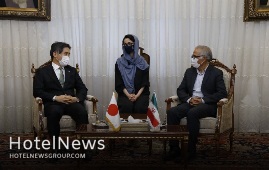
Japan’s Ambassador to Tehran Kazutoshi Aikawa whose country closely cooperates with Iran on Urmia Lake expressed content on Tuesday to see the lake being restored. In a meeting with Deputy Governor-General of East Azarbaijan Province, Aikawa said that he had travelled to the province in coordination with the United Nations Development Programme (UNDP) to see the process of implementing Urmia Lake restoration programs. Referring to the cooperation of Japan International Cooperation Agency (JICA) with the restoration program, the ambassador said that good efforts have been done and he was pleased to see the lake is being restored. He said that East Azarbaijan Province has good capacities of tourism and Japan is very interested in expanding tourism ties with the northeastern Iranian province. UNDP representative in Iran Claudio Providas said that the UN agency has had many cooperation programs with Japan to revive Urmia Lake and all programs are in progress in the best possible way. He stated that Iran was affected by climate change and this cannot be changed, but there can be programs to elevate local people’s awareness of the situation. He also said that the UNDP has implemented several programs in local communities around Urmia Lake and then it would be going to digitalize the marketing process for local agricultural products. East Azarbaijan Province Deputy Governor-General Javad Rahmati said that the province is one of the greatest provinces of Iran with over 4 million people living in the province. He also underlined that the province has close economic ties with neighboring countries Azerbaijan Republic, Armenia and Turkey. Alternative livelihood and changing agricultural pattern in the lands around Urmia Lake was among plans the current administration implemented, Rahmati said.
Create: Jul 7, 2021 Edit: Jul 7, 2021 Regional News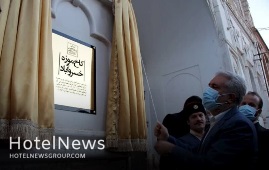
Iranian tourism minister Ali-Asghar Mounesan on Tuesday inaugurated a palace museum complex during his visit to Sanandaj, the capital of Kordestan province. Several other provincial and local officials, travel insiders, and cultural heritage experts attended the opening ceremony of Khosro-Abad Palace Museum, which is named after a centuries-old mansion located within the historical complex, CHTN reported. The palace complex has its roots in ancient Persia; however, it was more prosperous during the Qajar era (1789 to 1925). Kordestan also spelled Kurdistan, is bounded by the Iranian region of Azarbaijan on the north, and it borders Iraq on the west. The name Kordestan means “Country of the Kurds,” referring to the region’s principal inhabitants. After the Turkish invasion of Iran in the 11th century CE (Seljuk period), the name Kordestan was applied to the region comprising the northwestern Zagros Mountains. It was during the reign of the Safavid monarch, Shah Abbas the Great, that the Kurds rose to prominence, having been enlisted by Abbas I to help stem the attacks of the marauding Uzbeks from the east in the early 17th century.
Create: Jul 7, 2021 Edit: Jul 7, 2021 Regional News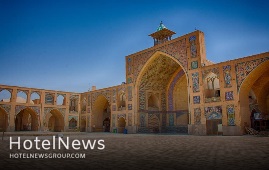
The lesser-known Hakim Mosque is a visually stunning monument in Isfahan, which travelers can pay a visit to near the centuries-old bazaar of the central Iranian city. The elegant mosque is not only a house of worship but also a public building serving a multiplicity of uses. It is a gathering place for prayers five times a day, an Islamic college, and an emergency shelter for travelers. Built-in the mid-17th century during the reign of Shah Abbas II, the mosque is named after its constructer who was a physician (“Hakim” in Persian). The mosque has no monumental entry, but five different minor entries. Frequently, a mosque is also used as a shortcut for another destination beyond the place of worship. Although the penetration of the mosque walls may take many forms, the primary destination is always the same. It is a courtyard that can be called a monumental space. The mosque also contains amenities, such as washrooms and toilets, for public use. Isfahan has long been nicknamed as Nesf-e-Jahan which is translated into “half the world”; meaning seeing it is relevant to see the whole world. In its heyday, it was also one of the largest cities in the region with a population of nearly one million. The cool blue tiles of Isfahan's Islamic buildings, and the city's majestic bridges, contrast perfectly with the encircling hot, dry Iranian countryside. The huge Imam Square, best known as Naghsh-e Jahan Sq. (literary meaning “Image of the World”), is one of the largest in the world (500m by 160m), and a majestic example of town planning. Built in the early 17th century, the UNESCO-registered square is punctuated with the most interesting sights in Isfahan. Modern Isfahan is now home to some heavy industry, including steel factories and a nuclear facility on its outskirts, however, its inner core wants to be preserved as a priceless gem.
Create: Jul 7, 2021 Edit: Jul 7, 2021 Regional News
Summer has arrived in the northern hemisphere. It is great news for the sun-lovers flocking to beach resorts. But what about those who want to beat the heat? If cool weather and even cooler destinations are more to your taste, here are places around the Iranian capital where scorching heat will be nothing more than an afterthought! On the northeast side of Tehran, you can find plenty of cool townships and villages such as Fasham, Ahar, Meygoun, Oushan, Damavand, Cheshmeh A’la, and Garmabdareh to name a few. These destinations, in addition to the fresh air, fruit gardens, and lush gardens, are mostly equipped with proper recreational facilities and abundant local restaurants. On the east, Shahandasht waterfall may be the top of your agenda. The 50-meter cascade is situated off the Haraz road, which connects Tehran to the Caspian Sea in the north. Adjacent to the falls stands a Sassanid-era (224 CE to 651) stronghold, named Qaleh Malek-Bahman, which worth paying a visit. Tangeh Vashi, a popular mountainous resort that is known for having a pleasant, cool stream can be your other choice in the east direction. Tangeh Vashi is where many opt for walking for minutes to cool off. Situated some 15 kilometers west of Firouzkouh, Tangeh Vashi also bears a 19th-century bas-relief commissioned by Fath Ali Shah Qajar (r. 1797 – 1834) to commemorate hit hunts during summer excursions. Apart from the east, you can choose to stay in Kan and Sulaqan, which are riverside rural districts westward. Another cool spot may be colorful valleys across the popular Chalous road that embraces hectic rows of restaurants and coffee shops. The villages of Darband and Darakeh stand out when it comes to the north of Tehran. Those are amongst the most accessible cool destinations for relaxing and enjoying good Iranian cuisine, good weather even climbing easy mountain routes. Tajrish Square is a gateway to the rocky Darband where people hike upward trails. A few kilometers uphill from the atmospheric square the road ends, becoming a path winding up a narrow rocky valley, with water cascading down the slopes. The trail heads up into the hills past a picturesque succession of teahouses, restaurants, and fruit-conserve stalls. A visit to Darband can easily be combined with Sadabad Cultural-Historical Complex. You may exit the once royal complex via the top entrance and keep going up the hill and perhaps drink a cup of tea and puff on a qalyan (hobble-bobble) while submerged with a mountain-village feel. Also, Darakeh is where you can enjoy the lovely nature, listen to the sound of the river, and rest for a while. It is teeming with beautiful scenery, a good trekking path, and countless riverside restaurants and cafes. For people who want to do more, it is possible to hike towards the Tochal cable car and beyond. The bustling Iranian capital, however, never disappoints its travelers! Exploring this mesmerizing metropolis will transport you on a journey through more than 250 years of Iranian history – from the dazzling Golestan Palace and the adjacent Grand Bazaar to the majestic Borj-e Azadi (“Azadi Tower”) and the former U.S. embassy in downtown Tehran. The Iranian capital is also home to prestigious museums such as Treasury of National Jewels, Niavaran Palace Complex, National Museum of Iran, Glass & Ceramic Museum, Masoudieh Palace, Sarkis Cathedral, Tehran Museum of Contemporary Art, Carpet Museum of Iran, to mention but a few. Serene gardens, contemporary cafes, and traditional teahouses are other options where you can relax and enjoy all that is good about Tehran.
Create: Jul 1, 2021 Edit: Jul 1, 2021 Regional News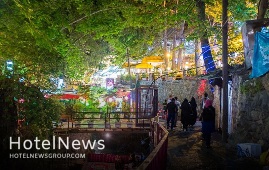
Summer has arrived in the northern hemisphere. It is great news for the sun-lovers flocking to beach resorts. But what about those who want to beat the heat? If cool weather and even cooler destinations are more to your taste, here are places around the Iranian capital where scorching heat will be nothing more than an afterthought! On the northeast side of Tehran, you can find plenty of cool townships and villages such as Fasham, Ahar, Meygoun, Oushan, Damavand, Cheshmeh A’la, and Garmabdareh to name a few. These destinations, in addition to the fresh air, fruit gardens, and lush gardens, are mostly equipped with proper recreational facilities and abundant local restaurants. On the east, Shahandasht waterfall may be the top of your agenda. The 50-meter cascade is situated off the Haraz road, which connects Tehran to the Caspian Sea in the north. Adjacent to the falls stands a Sassanid-era (224 CE to 651) stronghold, named Qaleh Malek-Bahman, which worth paying a visit. Tangeh Vashi, a popular mountainous resort that is known for having a pleasant, cool stream can be your other choice in the east direction. Tangeh Vashi is where many opt for walking for minutes to cool off. Situated some 15 kilometers west of Firouzkouh, Tangeh Vashi also bears a 19th-century bas-relief commissioned by Fath Ali Shah Qajar (r. 1797 – 1834) to commemorate hit hunts during summer excursions. Apart from the east, you can choose to stay in Kan and Sulaqan, which are riverside rural districts westward. Another cool spot may be colorful valleys across the popular Chalous road that embraces hectic rows of restaurants and coffee shops. The villages of Darband and Darakeh stand out when it comes to the north of Tehran. Those are amongst the most accessible cool destinations for relaxing and enjoying good Iranian cuisine, good weather even climbing easy mountain routes. Tajrish Square is a gateway to the rocky Darband where people hike upward trails. A few kilometers uphill from the atmospheric square the road ends, becoming a path winding up a narrow rocky valley, with water cascading down the slopes. The trail heads up into the hills past a picturesque succession of teahouses, restaurants, and fruit-conserve stalls. A visit to Darband can easily be combined with Sadabad Cultural-Historical Complex. You may exit the once royal complex via the top entrance and keep going up the hill and perhaps drink a cup of tea and puff on a qalyan (hobble-bobble) while submerged with a mountain-village feel. Also, Darakeh is where you can enjoy the lovely nature, listen to the sound of the river, and rest for a while. It is teeming with beautiful scenery, a good trekking path, and countless riverside restaurants and cafes. For people who want to do more, it is possible to hike towards the Tochal cable car and beyond. The bustling Iranian capital, however, never disappoints its travelers! Exploring this mesmerizing metropolis will transport you on a journey through more than 250 years of Iranian history – from the dazzling Golestan Palace and the adjacent Grand Bazaar to the majestic Borj-e Azadi (“Azadi Tower”) and the former U.S. embassy in downtown Tehran. The Iranian capital is also home to prestigious museums such as Treasury of National Jewels, Niavaran Palace Complex, National Museum of Iran, Glass & Ceramic Museum, Masoudieh Palace, Sarkis Cathedral, Tehran Museum of Contemporary Art, Carpet Museum of Iran, to mention but a few. Serene gardens, contemporary cafes, and traditional teahouses are other options where you can relax and enjoy all that is good about Tehran.
Create: Jun 28, 2021 Edit: Jun 28, 2021 Regional News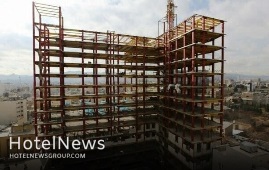
Upon their completion in the near future, these hotels will bring a significant change to the tourism industry in the central Iranian province, the provincial tourism chief has said. The official briefed on one of the accommodation projects, as an example, saying: “An investment of 2.6 trillion rials (about $62 million at the official exchange rate of 42,000 rials per dollar) has been made in the Zaferanieh Hotel, one of the under-construction projects,” the official added. “Covering an area of 1,500 square meters, the project is expected to generate 80 job opportunities directly,” he stated. “The hotel will have 90 rooms and will add 200 beds to the hospitality sector of the province,” he noted. The second-holiest city of the country after Mashhad, Qom is home to both the magnificent shrine of Hazrat-e Masumeh (SA) and the major religious madrasas (schools). Apart from sightseers and pilgrims who visit Qom to pay homage at the holy shrine, the city is also a top destination for Shiite scholars and students who come from across the world to learn Islamic studies at its madrasas and browse through eminent religious bookshops. The antiquity of Qom goes back to the Sassanid era (224 CE–651) and several historical mosques, mansions, and natural sceneries have been scattered across the city as well as towns and villages nearby.
Create: Jun 23, 2021 Edit: Jun 23, 2021 Regional News
Perched on top of a steep hill, Alamut Castle was once sheltering the followers of Hasan-e Sabbah (1070–1124), the spiritual leader of a heretical Ismaili sect that spawned the word ‘Assassins’. Alamut Castle is situated on the northeastern side of Gazor Khan Village in the environs of Alamut, Qazvin province. While approaching the village, visitors should pass for nearly half along a narrow road surrounded by cherry and pomegranate orchards, until a mass of gray-brown rock looms from distance with fortifications perched atop a summit. The access path to the fortress starts about 700m beyond the village square and requires a steep 25-minute climb via a stairway. Meaning “eagle’s nest”, Alamut is a geographic region in the western edge of the Alborz Mountain range, between the dry and barren plain of Qazvin in the south and the densely forested slopes of the Mazandaran province in the north. Sabbah’s rule over Alamut is shrouded in mystery and enigma; partly because most Ismaili records of the era were destroyed by the Mongols while the writings of their detractors survived. In the early 1930s, British-Italian explorer and travel writer Freya Stark described her exploration of the place in her book “The Valleys of the Assassins”. In her celebrated 1934 travelogue, she recounts her hike up to Nevisar with mules that "seemed to be standing on their hind legs." These days Alamut is something of a great day out. Visitors can leave Tehran first thing in the morning for Qazvin, weave across the Alamut's first ramparts a few hours later, and, heading up-valley, reach Gazorkhan in time for a late lunch. Most visitors -- virtually all Iranian -- regard the gorgeous mountain-rimmed valley as an idyllic weekend retreat. Villages and hamlets dot its floor and sides; cornfields and rice paddies occupy parcels of land between ravines, and irregular terraced plateaus ruffle the valley's picturesque undulating terrain. Qazvin was once the capital of the mighty Persian Empire, under Safavids, from 1548 to 98. It is a major tourist destination with a wonderfully restored caravanserai-turned-arts precinct, some quirky museums, and a handful of decent eating options. For most travelers, Qazvin is also primarily the staging point for excursions to the famed castle of “Assassins”
Create: Jun 20, 2021 Edit: Jun 20, 2021 Regional News
A select of Iranian travel-associated businesses and tour operators will promote handicrafts, traditions, and tourism potentials of the country at the 42nd FITUR tourism trade fair, which will be held in Madrid, Spain, from January 19 to 23, 2022. The Touring & Automobile Club of the Islamic Republic of Iran (TACI) as the representative of the Ministry of Cultural Heritage, Tourism and Handicrafts will be organizing Iran paravian at the tourism trade show, Mehr reported. A variety of exhibits, live performances, meetings, and workshops are amongst lineups of the Iranian exhibitors at FITUR 2022, which connects the industry with the inbound and outbound international markets. After hosting a post-pandemic recovery edition in the Spring of 2021, FITUR Madrid 2022 will resume its regular appointments at the beginning of the year, taking place at IFEMA – Feria de Madrid. Over the five days of the international tourism fair, professional participants will have access to unmissable commercial and business activities. In addition to being able to present their offers directly to the end customer, exhibitors can meet with over 150,000 trade visitors with significant purchasing power, according to organizers.
Create: Jun 19, 2021 Edit: Jun 19, 2021 Regional News
Iranian President Hassan Rouhani has urged sustainable efforts towards developing medical tourism across the country. “Health tourism is of great importance to us, and hospitals located in the border provinces of the country can serve a pivotal role in developing medical tourism by providing medical services to foreign guests and tourists,” Rouhani said on Thursday. He made the remarks on the sidelines of the inauguration ceremony of some health projects, urging the need for reinforcing medical and health services in some provinces, including Khorasan (Razavi), Isfahan, Fars, and East Azarbaijan, is an absolute duty. “For the time being, many Iranians living in foreign countries prefer to choose homeland for their treatment or certain surgeries,” he said, adding such a trend indicates great efforts made by “dear doctors and nurses and all the dear ones who work in the health sector”. Medical tourism is booming worldwide as about 20 to 24 million people are traveling for medical treatments annually. Factors such as increased care needs over longer lifespans, rising healthcare costs, and constant pressures on some insurance industries are reasons behind why some opt to travel abroad. Regarding price competitiveness, Iran currently ranks first in the world but the country has not been very successful in attracting potential travelers as other competitors like Singapore and Turkey. People from the Persian Gulf littoral states, Iraq and Syria as well as Iranian expatriates residing in Canada and Germany constituted the majority of medical travelers to the Islamic Republic, who received plastic, cosmetics, open-heart, and orthopedic surgeries amongst other treatments over the past couple of years. The Islamic Republic has set goals to exceed its yearly medical travelers to around two million in [calendar year] 1404 (March 2025-March 2026). Amongst Iran’s trump cards are the presence of credible surgeons and physicians, cutting-edge medical technologies, high-tech medicine and diverse specializations, super affordable procedures, and finally its hospitable people.
Create: Jun 19, 2021 Edit: Jun 19, 2021 Regional News
After more than a year of closure following the outbreak of coronavirus, Iran and Turkey have reopened a land border to passengers, ISNA reported on Friday. The Kapikoy-Razi border reopened on May 17 and a group of 41 female Iranian entrepreneurs and artists has recently entered the city of Van in Turkey, where the city’s hoteliers welcomed them with flowers, the report said. Tourists and vehicles are allowed through the border with negative COVID-19 PCR test results issued 72 hours in advance of entry. However, Razi-Kapikoy border from the Iranian side is still closed to tourists, and only diplomats, businessmen, and people who have a residence permit or are studying and living in Turkey are allowed to cross. As Turkey is a country through which many trips of Iranians living abroad and foreign nationals to Iran are made, the coronavirus pandemic prevented several businessmen and students from continuing their activities and even left patients who want to go abroad for further treatment helpless. Some 1.37 million Iranian tourists visited Turkey during the first eight months of 2019, accounting for 4.4% of all international arrivals in the country.
Create: Jun 12, 2021 Edit: Jun 12, 2021 Regional News
Having unique tourism capabilities, Iran is a safe and desirable travel destination for visitors from around the world, Cultural Heritage, Tourism, and Handicrafts Minister Ali-Asghar Mounesan has said. He made the remarks during a meeting with Russian and Iranian tourism activists in Moscow on Monday. In recent years, Iran’s tourism sector has flourished because new branches of traveling, such as eco-tourism, health tourism, mining tourism, and agritourism, have all been gaining popularity, the minister said. Iran offers an impressive range of tourist attractions, including historical, cultural, and natural monuments, handicrafts, dense forests, towering mountains, roaring rivers, and beautiful deserts, while there are also over 700 museums that can be visited in different cities, he explained. Tourists can find the country to be one of the pocket-friendly destinations in the world, he mentioned. He also noted that some 400 hotels and over 2,000 eco-lodge units have been established across the country. Iran’s image in the world is being tarnished by the U.S.’s anti-Iran policy, but traveling to Iran could change this image for foreign tourists, he added. Mounesan on Monday signed an action plan to implement a bilateral visa-free agreement for tourist groups. The signing of the agreement, which emphasizes a waiver of visas for tourist groups, was due to the good relations between the two countries as well as the interest of Iranians in visiting Russia and the existing capacity in the country for cultural tourists and history buffs, he noted during the signing ceremony. He also expressed hope that the signing of the joint action plan, as well as the process of increasing vaccination and overcoming the corona crisis, would result in a growth of tourism between Iran and Russia. In 2017, Iranian President Hassan Rouhani and his Russian counterpart Vladimir Putin inked a visa-free agreement for tourist groups. A joint technical committee has been developing an action plan for the previously agreed visa-free travel arrangements since then, to put the agreement into effect. Based on the 2017 agreement tour groups of 5 to 50 people heading to [easternmost parts of] Russia from Iran or vice versa are granted a visa-free stay of up to 15 days. Earlier this month, Mostafa Sarvari, who presides over the tourism marketing and advertising office of the Iranian Tour Operators Association, announced many Russian tourists are eager to travel to Iran, recounting his Russian counterparts. “Many [potential] Russian travelers are motivated to visit novel and lesser-known destinations such as Iran that could be a safe and attractive destination,” he said. “According to Russian tourism experts, the feedback from Russian tourists who have traveled to Iran has been very positive, and its reflection, especially on social media, has caused a great deal of enthusiasm and interest.” According to Ebrahim Pourfaraj, who heads the Iranian Tour Operators Association, rounds of negotiations have been held between Iranian tour operators, travel marketers, and their Russian counterparts. “We’ve been commenced talks with some Russian travel agents to put Iranian destinations on their itineraries…. And the Iranian Tour Operators Association has also entered negotiations with Russian unions for outbound tours to attract more travelers from Russia.” Pourfaraj says the majority of potential Russian travelers are unaware of the vast tourist attractions that exist in every corner of Iran. “The fact is that Iran’s political and economic relations with Russia are considered as good, but this has nothing to do with attracting tourists because it is directly connected with the Russian people. It is the Russian people who must choose Iran as their destination.” Iran is taking proactive measures in line with the long-term goal of 20 million tourists by 2025.
Create: Jun 9, 2021 Edit: Jun 9, 2021 Regional News
